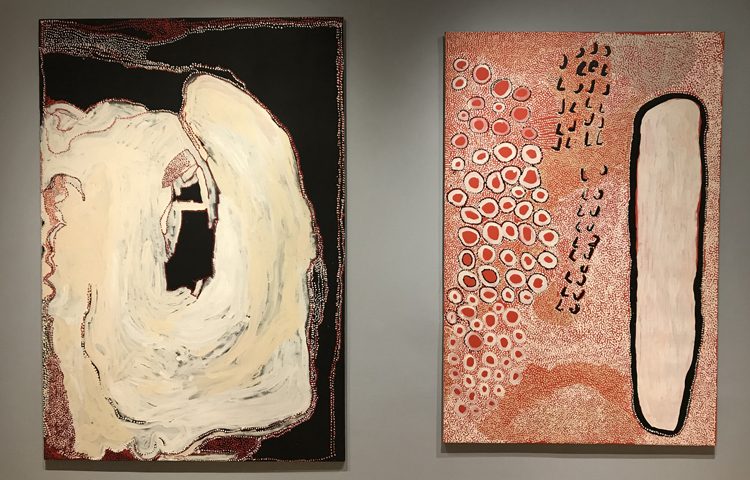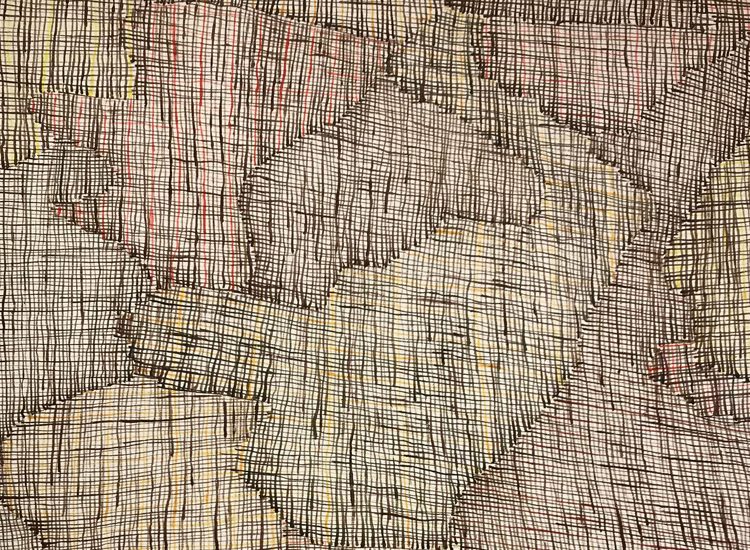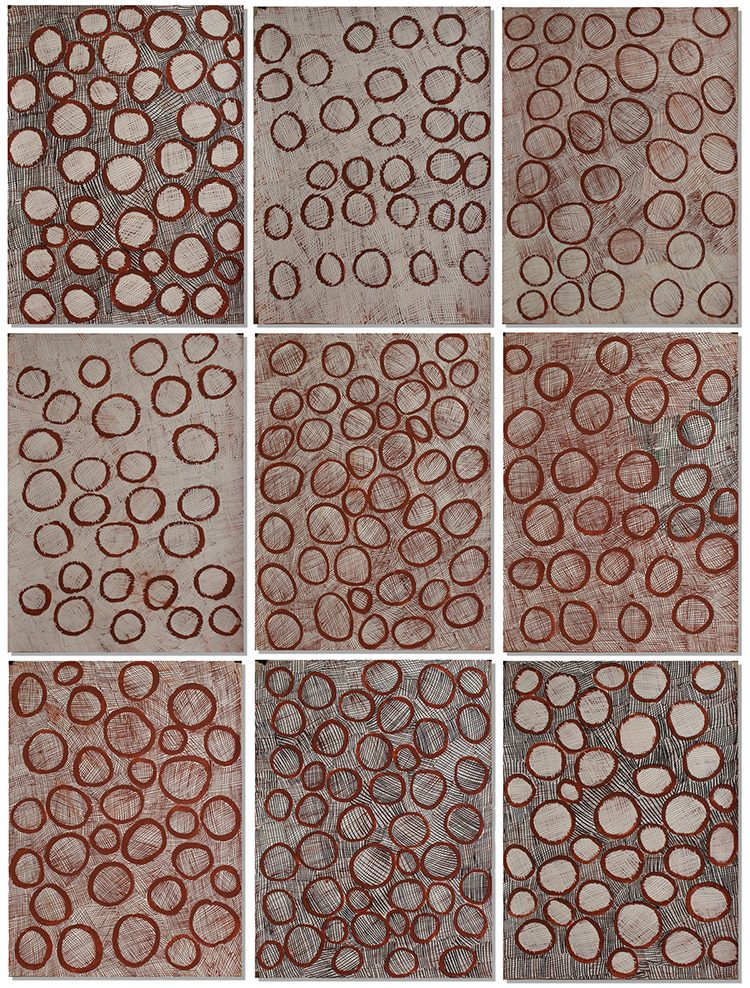Whereas Carlene West’s early work conforms closely to traditional iconography, after returning to Tjitjiti in 2009— the first time since her childhood—her style underwent a rapid transformation. Formal symbolic and narrative elements receded, giving way to more expressive painting. Depicted in swaths of white, the great salt lake Tjitjiti also found greater prominence. West’s paintings offer a metaphor for the connection between place and Indigenous identity. Anthropologist John Carty notes, “Carlene’s marks are the traces of meaningful action; of the actions that made the world, and that continue to make the world meaningful; of the artist becoming an ancestor.”
This work is on view in Marking the Infinite: Contemporary Women Artists from Aboriginal Australia through September 9, 2018.



